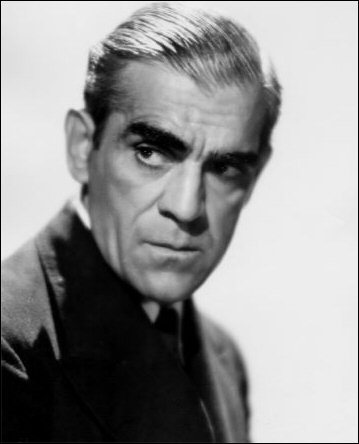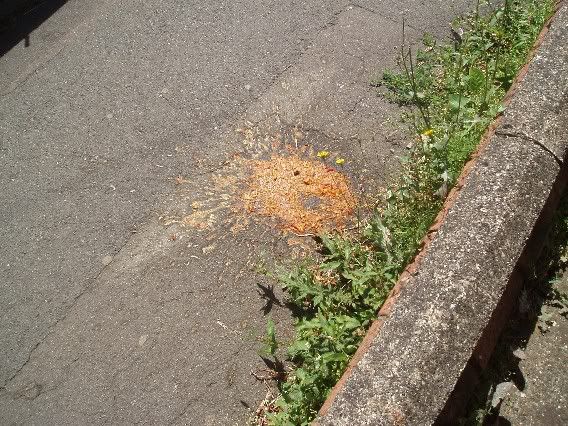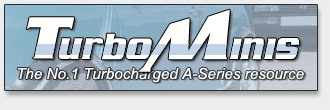| Page: |
| Home > Technical Chat > Srtaight Cut drops V Standard Helical ? | |||||||
 (2)[/url] by [url=https://www.flickr.com/photos/150672766@N03/]Rod Sugden[/url], on Fli) 5988 Posts Member #: 2024 Formally Retired Rural Suffolk |
8th Oct, 2008 at 12:13:39pm
Right, last thought before I go and do something useful....
Edited by Rod S on 8th Oct, 2008. Schrödinger's cat - so which one am I ??? |
||||||
|
591 Posts Member #: 360 Stu from Corwall aka Mr Jazz Piano, Love_Machine, kneegrow |
8th Oct, 2008 at 12:23:31pm
You could just use a bloody good oil like castrol r for a decent film between the gear/washer. MoS2 is not as good as it could be here.
Bugger off, I'm getting there. |
||||||
 12307 Posts Member #: 565 Carlos Fandango Burnham-on-Crouch, Essex |
8th Oct, 2008 at 12:33:25pm
PMSL.
Edited by Joe C on 8th Oct, 2008. On 28th Aug, 2011 Kean said:
At the risk of being sigged... Joe, do you have a photo of your tool? http://www.turbominis.co.uk/forums/index.p...9064&lastpost=1 https://joe1977.imgbb.com/ |
||||||
|
8604 Posts Member #: 573 Formerly Axel Podland |
8th Oct, 2008 at 12:35:29pm
On 8th Oct, 2008 Hedgemonkey said:
Probably a crap idea!!!!! Saul Bellow - "A great deal of intelligence can be invested in ignorance when the need for illusion is deep."
|
||||||
 1346 Posts Member #: 2340 Post Whore Dublin Ireland |
8th Oct, 2008 at 12:58:48pm
I might be getting mixed up but I think all this machining work would work out very expensive I know the last item I had ground with a special tool post grinder worked out hellish dear, why not go with a 7000 series bearing that fits the already ground idle gear shaft and maybe just a small amount of machining to the drop gear housing and gear box after all there alloy and will machine very easily??
On 8th Oct, 2008 Rod S said:
On 8th Oct, 2008 PaulH said:
.....you could machine the gear to allow some more room but the gear is as hard as the hob of hell at this point because it is a thrust face and their is bugger all room on the gear box caceing for machining ? I was think of all machining being on the gear, ie, machining away the current thrust face and replacing the whole of the inner boss (down to shaft diameter) with a built up pack of needle roller parts. If it's too hard even for carbide tools, then use a toolpost grinder with a suitably profiled wheel, or anneal it, machine it and have it re-heat treated afterwards... Just thoughts at the moment. On 17th Feb, 2009 Rob H said:
I find the easiest way is to super glue the bolt to the end of one of my fingers. ______________________________________________________ |
||||||
 (2)[/url] by [url=https://www.flickr.com/photos/150672766@N03/]Rod Sugden[/url], on Fli) 5988 Posts Member #: 2024 Formally Retired Rural Suffolk |
8th Oct, 2008 at 01:17:52pm
I'm just thinking out loud..... !!!
Schrödinger's cat - so which one am I ??? |
||||||
|
2488 Posts Member #: 1954 Post Whore Luton Bedfordshire |
8th Oct, 2008 at 01:37:03pm
Why not fit tapper rollers? seeing as we have to shim the idler gear any how you can use the same method to shim-up tapper rollers to apply the correct loading to the races when every thing is torqued down. so long as you use the same gaskets you would require only minimul adjustment if any at each rebuild. Own the day
|
||||||
 1346 Posts Member #: 2340 Post Whore Dublin Ireland |
8th Oct, 2008 at 02:57:09pm
taper roller is a very interesting option and with very little machining they should fit,
On 17th Feb, 2009 Rob H said:
I find the easiest way is to super glue the bolt to the end of one of my fingers. ______________________________________________________ |
||||||
|
1303 Posts Member #: 30 Post Whore Epsom, Surrey |
8th Oct, 2008 at 03:46:50pm
surly the existing solution is the timkin idler gear? |
||||||
 11046 Posts Member #: 965 Post Whore Preston On The Brook |
8th Oct, 2008 at 03:58:49pm
Any one looked at the RPM potential for these thrust roller bearings? On 26th Oct, 2004 TurboDave16v said:
Is it A-Series only? I think it should be... So when some joey comes on here about how his 16v turbo vauxhall is great compared to ours, he can be given the 'bird'... On 26th Oct, 2004 Tom Fenton said:
Yep I agree with TD........ |
||||||
|
2488 Posts Member #: 1954 Post Whore Luton Bedfordshire |
8th Oct, 2008 at 04:24:27pm
On 8th Oct, 2008 Sprocket said: good throw in. If they are used as wheel bearings I dont see any potential issues here. Its size and the area they are to be fitted in, is there enough meet left to allow such a mod?
Any one looked at the RPM potential for these thrust roller bearings? Own the day
|
||||||
 (2)[/url] by [url=https://www.flickr.com/photos/150672766@N03/]Rod Sugden[/url], on Fli) 5988 Posts Member #: 2024 Formally Retired Rural Suffolk |
8th Oct, 2008 at 05:29:28pm
On 8th Oct, 2008 Sprocket said:
Any one looked at the RPM potential for these thrust roller bearings? Good point, I knew I should have read every column in the table 
For the flat needle roller thrust bearings the speed rating is 3,200 RPM for a 25mm bore, 3,800 RPM for 20mm bore. However, in the technical notes SKF say these speeds can be exceeded provided circulating oil and adequate cooling of the oil is provided (they do not say how much they can be exceed by though). The idler gear runs slower than the engine by 29/37 so 3,200 becomes ~4100 and 3800 becomes ~4850 equivilant engine RPM so for a road car, taking SKF's "circulating oil and cooling" into account it might be viable but not for a racer. Like I said, if it was easy, someone would already have done it :) Taper roller bearings (if they could be fitted) however, have much higher ratings, ie 9000 RPM fo a medium series 25mm bore. Schrödinger's cat - so which one am I ??? |
||||||
 12307 Posts Member #: 565 Carlos Fandango Burnham-on-Crouch, Essex |
8th Oct, 2008 at 05:37:40pm
interesting stuff guys!
On 28th Aug, 2011 Kean said:
At the risk of being sigged... Joe, do you have a photo of your tool? http://www.turbominis.co.uk/forums/index.p...9064&lastpost=1 https://joe1977.imgbb.com/ |
||||||
 7763 Posts Member #: 74 I pick holes in everything.. Chief ancient post excavator |
8th Oct, 2008 at 05:56:05pm
Why not fit a chain? On 13th Jul, 2012 Ben H said:
Mine gets in the way a bit, but only when it is up. If it is down it does not cause a problem. |
||||||
|
Forum Mod 10979 Posts Member #: 17 ***16*** SouthPark, Colorado |
8th Oct, 2008 at 05:56:55pm
You guys are barking up the wrong tree on many occasions here, but I thought I'd see where this post went before jumping in.
Edited by TurboDave16V on 8th Oct, 2008. On 17th Nov, 2014 Tom Fenton said:
Sorry to say My Herpes are no better Ready to feel Ancient ??? This is 26 years old as of 2022 https://youtu.be/YQQokcoOzeY |
||||||
|
Site Admin  9401 Posts Member #: 58 455bhp per ton 12 sec 1/4 mile road legal mini Sunny Bridgend, South Wales |
8th Oct, 2008 at 06:15:40pm
You guys are barking up the wrong tree on many occasions here, but I thought I'd see where this post went before jumping in.
Edited by TurboDave16V on 8th Oct, 2008. Team www.sheepspeed.com Racing
On 15th May, 2009 TurboDave said:
I think the welsh one has it right! 1st to provide running proof of turbo twinkie in a car and first to run a 1/4 in one!! Is your data backed up?? directbackup.net one extra month free for all Turbo minis members, PM me for detials |
||||||
|
Site Admin  9401 Posts Member #: 58 455bhp per ton 12 sec 1/4 mile road legal mini Sunny Bridgend, South Wales |
8th Oct, 2008 at 06:16:57pm
Bollox, dave you beat me to it, That wasn't there when I posted. I was going to say exactly the same thing! Great minds think alike and all.. Team www.sheepspeed.com Racing
On 15th May, 2009 TurboDave said:
I think the welsh one has it right! 1st to provide running proof of turbo twinkie in a car and first to run a 1/4 in one!! Is your data backed up?? directbackup.net one extra month free for all Turbo minis members, PM me for detials |
||||||
|
Forum Mod 10979 Posts Member #: 17 ***16*** SouthPark, Colorado |
8th Oct, 2008 at 06:59:28pm
I agree Jim, it is very close what we both said. Strange that. On 17th Nov, 2014 Tom Fenton said:
Sorry to say My Herpes are no better Ready to feel Ancient ??? This is 26 years old as of 2022 https://youtu.be/YQQokcoOzeY |
||||||
 (2)[/url] by [url=https://www.flickr.com/photos/150672766@N03/]Rod Sugden[/url], on Fli) 5988 Posts Member #: 2024 Formally Retired Rural Suffolk |
8th Oct, 2008 at 07:25:41pm
OK,
Schrödinger's cat - so which one am I ??? |
||||||
|
Forum Mod 10979 Posts Member #: 17 ***16*** SouthPark, Colorado |
8th Oct, 2008 at 08:38:52pm
On 8th Oct, 2008 Rod S said:
OK, I'll plead guilty.... Ah, so YOU were the second gunman on the grassy knoll? On 8th Oct, 2008 Rod S said:
1 - Input shaft (first motion shaft) bearing - if by nature of the opposite helixes either side it is partially balanced axially (can't be exact balance because the number of teeth are different ???) surely swapping either the drops or the box to straight cuts (but not both) should create a significant axial load and lead to problems with that bearing. Yes - assuming I have it right in my memory that the angles are opposed on a factory box - can you confirm? On 8th Oct, 2008 Rod S said:
2 - Idler gear - if the only overall thrust is generated by the three gears not being in a straight line (and as such is small) and the predominant loading is radial in the supporting cylindrical bearings from the "tipping" effect, why is it the thrust faces that suffer and not the needle rollers ??? Did Leyland increase the diameter of the shaft and needle rollers when they increased the helix angle from A to A+ because of increasing this "tipping" load and did they sacrifice a small bit of thrust area as a result ??? The thrust faces suffer because they are not as good of a bearing surface as the bearings. The load on these faces is obviously reliable for a 998, ok for a 1275, and on the limit for a 85lb ft turbo, hence assuming nothing else changes, their 'reliability' decreases by the same factor as torue increses. This tipping has to be absorbed somewhere - and it is almost all translated to radial loads on the bearing - draw a FB diagram of the gear, rembering it isn't 'allowed' to slide sideways, and you can see the radial loads have to increase at the bearing for increase of torque. I don't imagine they sacrificed anything - so much as optimised the axial to radial capacities for the tooth profile / angle used. On 8th Oct, 2008 Rod S said:
I agree flat needle roller thrust bearings are far from ideal as the two ends of the needle are trying to be driven at different speeds (or they want to go in a straight line as you put it) - presumably this is the main reason they have a much lower speed rating than a similar sized taper roller - but are they worth any further consideration ??? Has anyone tried them ??? I don't know for sure, but it could be the speed is more likely related to getting oil into them - as by their virtue they want to send oil outwards - similar to the way a taper-bearing in oil will actually 'pump' oil outwards, potentially leading to a premature failure. The sliding is probably another factor as you identify. We don't use them at all. The only manual transmission I've seen them in is between the input shafts on a DSG - which hasn't got a significant differential speed (<3000rpm). Basically - they reduce transmission efficiency which is why they are becomming less and less - even in AT's. On 8th Oct, 2008 Rod S said:
What do you think about pressure feeding the (plain) thrust washers ??? Would it compromise the cylindrical needle roller bearings with excess oil in that area ??? In short, are there any sensible improvements (tried and tested or even just theoretical) for someone who want to retain helicals ??? Harry was making the most significant changes a few years ago - Not sure what the reliability of these are in the longer term. He went for a full compliment needle bearing - rather than needles seperated by a cage. This is better for dynamic and static capacity, but generally limits the speed as there is less space for an oil film - as I said, i don't know how that worked. I recall he pressure fed them with filtered oil by capping the inner end of the idler bearing in the trans case, drilling the idler from one end to the other, and feeding oil into the pocket where the bearing is located in the transfer case. this would have forced oil through BOTH needles, which would have HAD to escape via the thrust bearings - hence lubricating them in the process. The only danger of this is 'over feeding' the bearings to the point that they slide over an excess film of oil - even worse is if the oil is carrying contaminants as you are 'now' potentially bringing a greater number of contaminated particles in with your 'extra' flow compared to the limited number of contaminants in the limited splash lube.... I think this is why folks have (in the past) had failures when trying pressure-fed laygear bearings - not through any fault of their own - just that they simply didn't know (as I didn't before I know what I now do)... I like Harry's idea - but it has it's pitfalls as you can see. Edited by TurboDave16V on 8th Oct, 2008. On 17th Nov, 2014 Tom Fenton said:
Sorry to say My Herpes are no better Ready to feel Ancient ??? This is 26 years old as of 2022 https://youtu.be/YQQokcoOzeY |
||||||
|
Forum Mod 10979 Posts Member #: 17 ***16*** SouthPark, Colorado |
8th Oct, 2008 at 08:45:05pm
To expand on a way of preventing 'overfeeding' oil, the simplest way is to basically fill a chamber adjacent to the bearing, and then allow the oil to flow out of the top of the chamber. Result is zero pressure, and sufficient head to keep lubrication in there.
On 17th Nov, 2014 Tom Fenton said:
Sorry to say My Herpes are no better Ready to feel Ancient ??? This is 26 years old as of 2022 https://youtu.be/YQQokcoOzeY |
||||||
 (2)[/url] by [url=https://www.flickr.com/photos/150672766@N03/]Rod Sugden[/url], on Fli) 5988 Posts Member #: 2024 Formally Retired Rural Suffolk |
8th Oct, 2008 at 10:05:41pm
Thanks for all that Dave, it got rid of a few misconceptions I had and made me realise I don't alway think straight...
On 8th Oct, 2008 TurboDave said:
Yes - assuming I have it right in my memory that the angles are opposed on a factory box - can you confirm? Can't do a sensible photo as I just put my only "open" box on the project engine last night but from earlier photos of another box.... 

... the helix angles are the same but as one is driven and the other is driving, that means axial thrust is neutral (apart from the size difference) doesn't it ??? I'll reflect on everything you've said but overall, I'm a lot less concerned now about what I thought was my weak link. Schrödinger's cat - so which one am I ??? |
||||||
|
591 Posts Member #: 360 Stu from Corwall aka Mr Jazz Piano, Love_Machine, kneegrow |
8th Oct, 2008 at 10:37:26pm
Well done guys. Excellent couple of posts. I'm added to! Bugger off, I'm getting there. |
||||||
|
Forum Mod 10979 Posts Member #: 17 ***16*** SouthPark, Colorado |
9th Oct, 2008 at 01:24:41pm
Well, thinking about this last night - I realised I gave bum info about the 1st motion bearing... this must be rated quite happily for the axial thrust from the input (transfer) gear alone, as when driving in 4th, there is no torque being transmitted to the laygear - hence this bearing MUST be rated for 85%+ duty (or whatever duty cycle cars use) in 4th gear. Hence, running a SC box and helical drops would make very little difference to this bearing in reality. On 17th Nov, 2014 Tom Fenton said:
Sorry to say My Herpes are no better Ready to feel Ancient ??? This is 26 years old as of 2022 https://youtu.be/YQQokcoOzeY |
||||||
 (2)[/url] by [url=https://www.flickr.com/photos/150672766@N03/]Rod Sugden[/url], on Fli) 5988 Posts Member #: 2024 Formally Retired Rural Suffolk |
9th Oct, 2008 at 02:41:27pm
Another thought - dangerous I know, but here goes....
Schrödinger's cat - so which one am I ??? |
||||||
| Home > Technical Chat > Srtaight Cut drops V Standard Helical ? | |||||||
|
|||||||
| Page: |

